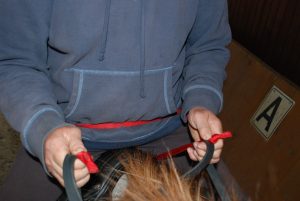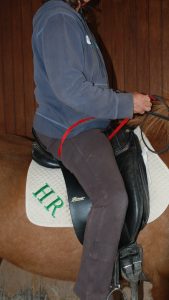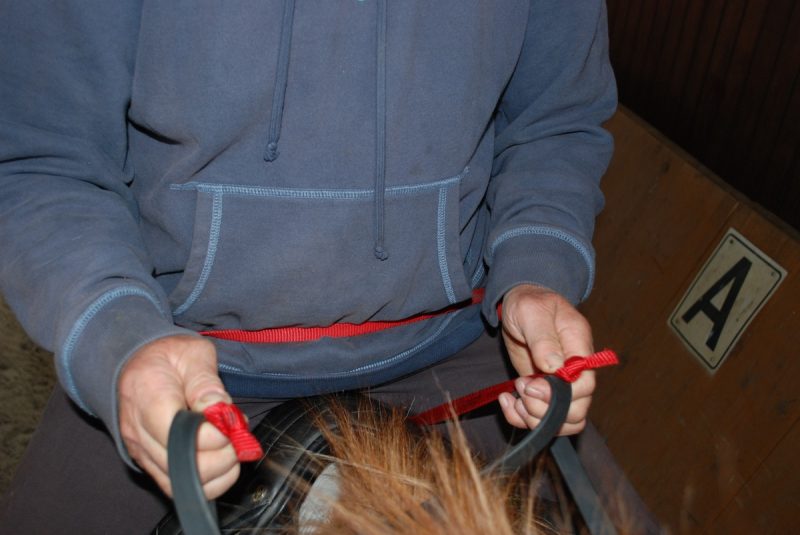
Do you pull back on your reins or do you let your arms go too far forward? Have you heard the term “ride back to front” but find yourself riding “front to back”? Do you have difficulty feeling that your seat is connected to your hands? This lesson will help you find the connection between your seat to your hands.
Next time you ride notice how much your arms are moving. Do you throw away the contact to give your horse a “release” the moment your horse does something correctly? Do you shift your body forward or your seat backward as you do this? Or do you stop moving in your seat as you take your arms back when stopping? In order to ride “back to front” your hands must maintain a relationship to your seat and your seat needs to move forward with the horse, not against his movement. Otherwise your seat could be giving your horse one signal while your hands are doing something completely different causing confusion for your horse.

Riding “back to front” means that the horse is moving from his hindquarters into your hands. Your hands and arms must move in sync with your pelvis. But very often riders are unaware that the seat is moving in the opposite direction or not at all. In these instances the hands will automatically conflict by moving opposite to the seat and/or pulling back, which causes the rider to ride “front to back”. Front to back will shorten the horse’s neck and put the horse on the forehand while blocking the hindquarters.
To help you find this “back to front” connection take a long thin strap and tie a small knot in each end. While mounted place the strap over you lap, around the outside of your thighs then wrap it around your thighs, between the saddle and your legs, bringing the ends toward the pommel. Hold one end with each hand along with your reins. You have now connected your seat to your hands and the horse’s mouth through the reins. Ride at walk until you get used to the strap. Remember to let it slip through your hands or let go completely if your horse becomes nervous or excited or you feel anxious due to the restriction.

You may feel very limited at first especially if you are used to moving your hands around. If you feel like your hands are pulling against your pelvis expand your chest forward and upward to alleviate the tension. Feel how this expands your lower ribs and allows your seat to move forward to your hands. Be careful not lift the chest too much or this will hollow your back causing your seat to move opposite to your hands.
Practice in short segments the strap becomes less awkward. Notice if it stays slightly taught as you ride or becomes loose and floppy. Floppy indicates you have pulled your hands back to your seat instead of your seat moving toward your hands. Practice until you can keep an even tension on both sides of the strap while riding on straight lines and large circles. Test yourself by riding walk/halt/walk transitions. Do you lose the connection or feel restricted by the strap? When your hips remain free you will be able to keep an even tension without feeling restricted and ride your transition to halt. When ready ride at the trot (sitting rather than rising will be easier at first).
Use this Murdoch Minute to test your ability to ride “back to front”, from seat to hand. When you keep an even tension on the strap your hips will be unrestricted. This allows your seat to move toward your hands while maintaining a soft yet clear rein contact so that your horse is unrestricted by your seat so that you both enjoy the ride!




